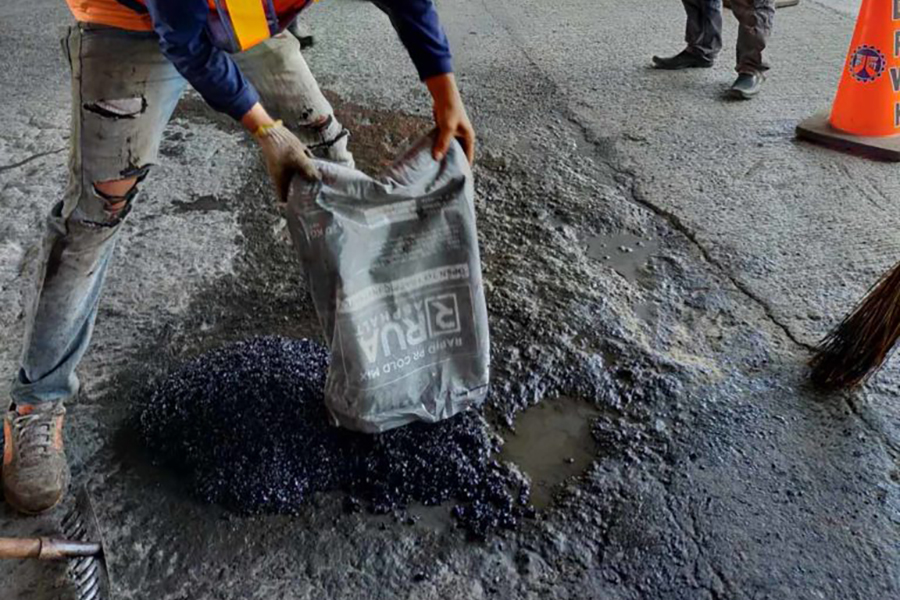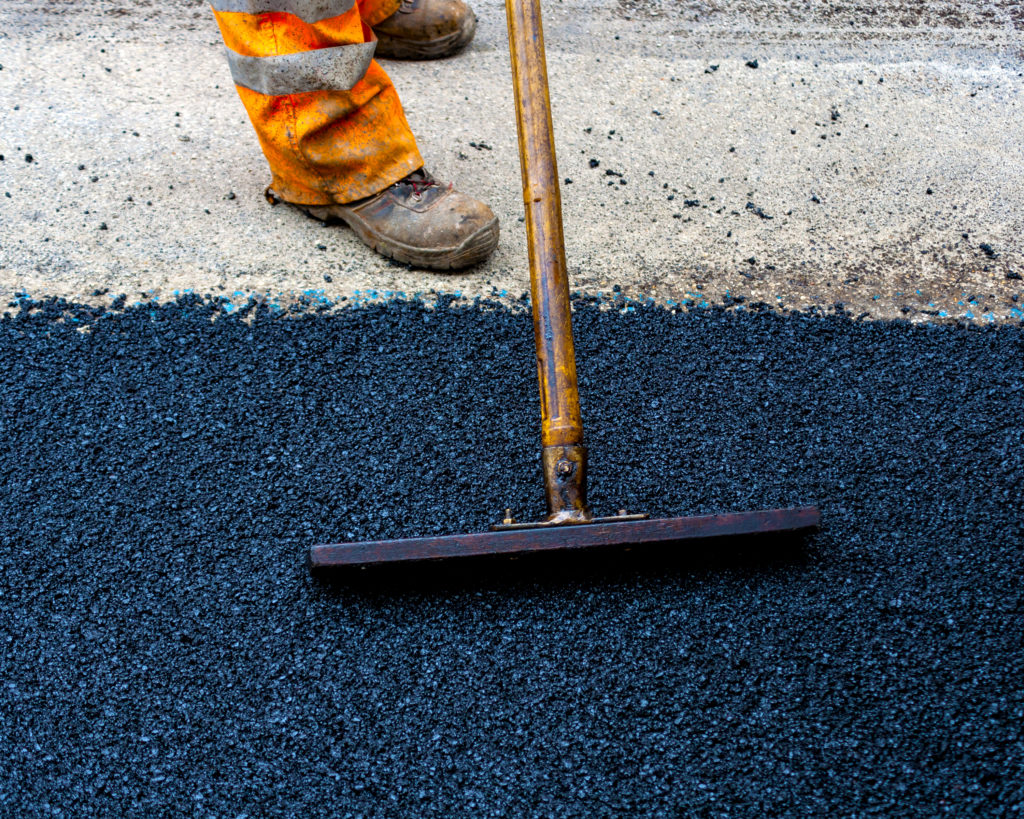Make Best Use Of Area Performance with Hot Mix Asphalt Angled Parking Lot Solutions
Make Best Use Of Area Performance with Hot Mix Asphalt Angled Parking Lot Solutions
Blog Article
Opening the Keys of Hot Mix Asphalt Technology
Exploring the midsts of hot mix asphalt innovation uncovers a globe where exact formulations and careful processes converge to shape our roadways and infrastructure. The fusion of aggregates, fillers, and binders isn't just a building job yet a tactical orchestration of durability and performance. As we peer into the complex dancing of elements, a tapestry of resilience and sustainability unravels. However what exists below this surface area of asphaltic proficiency, and what keys wait to be introduced in the world of leading developments?
Significance of Hot Mix Asphalt
Hot Mix Asphalt plays an important function in modern-day framework advancement due to its toughness and cost-effectiveness. As the most commonly utilized paving material for roads, highways, and car park, Hot Mix Asphalt provides a range of benefits that contribute to its importance in building jobs. One key benefit is its capability to stand up to rush hour tons and harsh climate condition, providing a durable and dependable surface area for transport networks. Additionally, Hot Mix Asphalt is cost-efficient in both preliminary building and long-lasting maintenance, making it a recommended option for many infrastructure projects.
The sturdiness of Hot Mix Asphalt stems from its structure, which consists of aggregates, binder, and filler materials that are very carefully selected and blended to meet certain performance requirements. Generally, the importance of Warm Mix Asphalt in framework growth can not be understated, as it continues to be a keystone of modern-day building and construction practices.
Parts of Asphalt Mixes
The make-up of asphalt blends contains thoroughly chosen aggregates, binder, and filler materials that are important for attaining details efficiency needs. Accumulations are the key component of asphalt blends, providing stamina and security. These aggregates can be all-natural, such as crushed rock or crushed rock, or artificial, like recycled materials from old sidewalks. The binder, typically bitumen or asphalt concrete, holds the aggregates with each other and gives versatility and resilience to the mix. The choice of the binder is essential as it straight affects the mix's performance in different climate condition. Fillers, such as hydrated lime or Portland cement, are made use of to boost the mix's workability and aging resistance. Angled Parking.
The mix and percentage of these parts play a substantial duty in determining the quality and performance of the asphalt mix. Designers carefully design the mix to meet specific requirements, considering factors like traffic volume, environment problems, and sidewalk life expectancy. Appropriate choice and balancing of aggregates, binder, and fillers are essential for creating durable, durable asphalt sidewalks.
Combining and Production Techniques

Once the aggregates are selected, the binder, frequently asphalt cement, is added to bind the materials together. The binder's high quality and quantity considerably impact the mix's stamina, versatility, and resistance to environmental elements. Additionally, fillers like hydrated lime or Rose city concrete may be integrated to enhance specific features of the asphalt mix, such as its workability or dampness resistance.
Throughout production, the aggregates and binder are warmed, commonly in between 250-325 ° F(121-163 ° C ), to help with mixing and make certain correct finish of the aggregates. The mixing procedure should be extensive to achieve an uniform blend that promotes the wanted performance characteristics of the asphalt. Numerous methods, such as batch blending or drum mixing, are used to accomplish consistent and high-grade asphalt mixes for building published here and construction projects.
Aspects Impacting Asphalt Performance
Factors influencing asphalt efficiency incorporate a range of variables that affect the longevity, longevity, and general top quality of asphalt pavements. One crucial variable is the quality of materials utilized in the asphalt mix.

Layout factors to consider, such as sidewalk density and drainage, are important in making sure the lasting efficiency of the asphalt sidewalk. By thoroughly considering these service providers, designers and aspects can enhance asphalt performance and improve the service life of pavements.
Lasting Practices in Asphalt Modern Technology

In addition, the advancement of warm-mix asphalt (WMA) innovations has acquired traction in recent times. WMA permits for the manufacturing and placement of asphalt blends at reduced temperatures compared to traditional hot-mix asphalt, causing minimized energy consumption and greenhouse gas exhausts. Moreover, making use of porous asphalt blends can assist mitigate stormwater drainage problems by allowing water to penetrate with the pavement and right into the ground, promoting all-natural water filtering and recharge procedures. By implementing these lasting practices, the click now asphalt sector can contribute to constructing a more eco friendly and resistant facilities network.
Verdict
Finally, hot mix asphalt technology plays an important function in modern-day framework growth due to its sturdiness and cost-effectiveness. By very carefully stabilizing parts, using correct blending strategies, and taking into consideration numerous variables, designers can develop high-quality asphalt mixes that withstand hefty traffic lots and rough weather. Welcoming lasting methods, such as utilizing warm-mix technologies and recycled materials, further boosts the ecological friendliness of asphalt innovation.
Mixing and production strategies in warm mix asphalt innovation involve the precise mix and handling of aggregates, binder, and fillers to develop a sturdy and high-performance asphalt mix.Elements influencing asphalt efficiency include a range of variables that influence the longevity, durability, and overall top websites quality of asphalt pavements. Sustainable techniques in asphalt innovation encompass numerous initiatives intended at minimizing the environmental influence of asphalt production and paving procedures. By integrating redeemed asphalt pavement (RAP) and recycled asphalt shingles (RAS) right into new asphalt blends, the industry can substantially decrease the intake of raw materials and power, while also lowering landfill waste.
WMA permits for the production and positioning of asphalt mixes at lower temperature levels compared to typical hot-mix asphalt, resulting in decreased power consumption and greenhouse gas exhausts.
Report this page